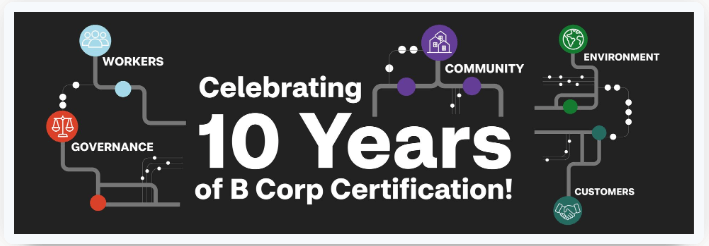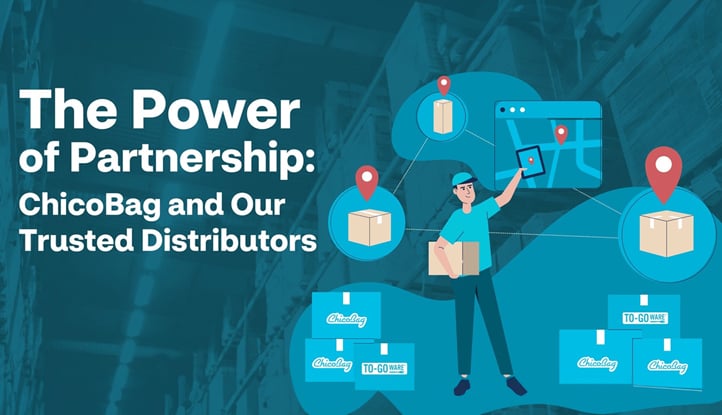In a world where consumers, investors, and employees are increasingly demanding corporate responsibility, building a sustainable company culture is no longer a choice; it's a necessity. Embracing sustainability isn't just about saving the planet; it's about securing your company's future. By weaving environmental stewardship, social responsibility, and economic viability into the fabric of your organization, you can create a powerful competitive advantage that drives innovation, enhances brand reputation, and boosts the bottom line. In this comprehensive guide, we'll explore proven strategies for transforming your company culture into a beacon of sustainability and profitability, positioning your business for long-term success in the 21st century.
1. Environmental Awareness and Education:
Educating your employees about environmental issues isn't just about doing what's right; it's about equipping your team with the knowledge to drive efficiency and innovation. By understanding the environmental impact of your operations, employees can identify opportunities for cost savings, resource optimization, and risk mitigation. Additionally, a well-informed workforce is better equipped to communicate your company's sustainability efforts to customers, enhancing brand reputation and loyalty.
2. Transparency:
Transparency isn't just a moral imperative; it's a strategic advantage. By openly sharing information about your sustainability initiatives, you build trust with customers, investors, and other stakeholders, enhancing brand credibility and competitive advantage. Moreover, transparent supply chains can lead to cost efficiencies through improved risk management, streamlined processes, and stronger supplier relationships.
3. Recycling and Waste Reduction:
Investing in recycling and waste reduction initiatives isn't just about reducing environmental impact; it's about cutting costs and increasing efficiency. By minimizing waste generation and maximizing resource recovery, companies can lower disposal costs, optimize material usage, and even generate revenue through recycling programs or waste-to-energy solutions. Additionally, reducing packaging waste can lead to savings in procurement and transportation costs.
4. Mindful Consumption:
Promoting mindful consumption among employees can translate into significant cost savings for your business. By encouraging responsible resource use and minimizing excess consumption, companies can reduce expenses related to purchasing, storage, and disposal. Moreover, supporting sustainable suppliers and products can lead to long-term cost reductions through improved supply chain resilience and reduced risk of supply chain disruptions.
5. Social Activism:
Supporting social activism isn't just a moral obligation; it's a strategic investment in brand equity and customer loyalty. By aligning your company with causes that resonate with your target audience, you can enhance brand visibility, attract socially conscious consumers, and differentiate yourself from competitors. Moreover, engaging in social activism can foster employee morale, retention, and productivity, leading to tangible bottom-line benefits.
6. Social Responsibility:
Embedding social responsibility into your company's DNA isn't just about corporate citizenship; it's about mitigating risks and enhancing long-term profitability. Companies that prioritize social responsibility are better positioned to attract and retain top talent, reduce employee turnover and absenteeism, and improve overall workplace morale and productivity. Additionally, socially responsible companies often enjoy stronger relationships with customers, suppliers, and regulators, reducing the likelihood of reputational damage or regulatory scrutiny.
7. Community Empowerment:
Investing in community empowerment isn't just a philanthropic gesture; it's a smart business strategy. By supporting local communities, companies can build goodwill, enhance brand reputation, and foster customer loyalty. Moreover, engaging with communities can lead to valuable partnerships, market insights, and business opportunities, driving revenue growth and market expansion.
8. Social Equity:
Promoting social equity isn't just a moral imperative; it's a business imperative. Companies that prioritize diversity, inclusion, and equity are more innovative, adaptable, and resilient in the face of change. By fostering a diverse and inclusive workplace, companies can attract a broader talent pool, improve employee engagement and creativity, and better serve diverse customer demographics, leading to increased market share and competitiveness.
9. Circular Economy:
Transitioning towards a circular economy isn't just about environmental sustainability; it's about unlocking new revenue streams and cost-saving opportunities. By designing products for durability, reparability, and recyclability, companies can reduce material costs, extend product lifecycles, and minimize waste disposal expenses. Moreover, embracing circular business models such as product-as-a-service or remanufacturing can create new revenue streams and enhance customer loyalty.
10. Green Building and Energy Efficiency:
Investing in green building practices and energy efficiency isn't just about reducing your carbon footprint; it's about lowering operating costs and increasing asset value. By incorporating sustainable design features such as natural lighting, energy-efficient appliances, and renewable energy systems, companies can significantly reduce utility expenses, improve employee productivity, and attract environmentally conscious tenants or buyers. Moreover, green buildings often command higher rental rates and selling prices, enhancing long-term financial returns.
11. Employee Engagement and Wellness:
Engaging employees in sustainability initiatives isn't just about promoting eco-friendly behaviors; it's about fostering a culture of well-being and purpose. By providing opportunities for employees to participate in sustainability projects, volunteer programs, and wellness activities, companies can improve job satisfaction, reduce stress and burnout, and enhance overall employee health and productivity. Moreover, a culture of engagement and well-being can be a powerful recruitment and retention tool, attracting top talent and reducing turnover costs.
12. Sustainable Innovation and R&D:
Investing in sustainable innovation and research and development (R&D) isn't just about developing eco-friendly products; it's about driving long-term competitiveness and growth. By prioritizing sustainability in product design, materials selection, and manufacturing processes, companies can create differentiated offerings that appeal to environmentally conscious consumers, command premium prices, and capture market share. Moreover, sustainable innovation can lead to cost savings through reduced material usage, improved efficiency, and streamlined supply chains.
FAQs:
- Q: How can my company get started with building a sustainable culture? A: Begin by conducting a sustainability assessment to identify areas of opportunity and set clear goals. Engage employees at all levels to generate ideas and build buy-in. Start with small, achievable initiatives and celebrate successes along the way.
- Q: What are some quick wins for improving sustainability in the workplace? A: Implement a recycling program, switch to energy-efficient lighting, encourage paperless workflows, and promote sustainable commuting options such as carpooling or cycling. These simple actions can generate immediate cost savings and environmental benefits.
- Q: How can I measure the financial impact of sustainability initiatives? A: Track key metrics such as energy consumption, waste generation, and water usage, and calculate the associated cost savings. Monitor employee engagement, retention, and productivity rates to assess the impact on human capital. Conduct customer surveys to gauge the effect on brand reputation and loyalty.
- Q: How can I engage suppliers in my company's sustainability efforts? A: Communicate your sustainability goals and expectations to suppliers, and incorporate sustainability criteria into your procurement processes. Collaborate with suppliers to identify opportunities for reducing waste, optimizing logistics, and sourcing sustainable materials. Recognize and reward suppliers who demonstrate leadership in sustainability.
- Q: What are some common challenges in building a sustainable company culture, and how can I overcome them? A: Common challenges include resistance to change, lack of resources or expertise, and difficulty measuring ROI. To overcome these obstacles, secure leadership buy-in, provide training and education, and start with small, achievable goals. Celebrate successes and communicate the business benefits of sustainability to build momentum and support.
Resources:
- "The Sustainable Business Case Book" by Ross Gittell, Matt Magnusson, and Michael Merenda - A comprehensive collection of case studies showcasing how companies have successfully integrated sustainability into their business models and achieved financial success.
- "The B Corp Handbook: How to Use Business as a Force for Good" by Ryan Honeyman and Tiffany Jana - A practical guide for companies seeking to become certified B Corporations, demonstrating their commitment to social and environmental responsibility.
- "Cradle to Cradle: Remaking the Way We Make Things" by Michael Braungart and William McDonough - A groundbreaking book that introduces the concept of cradle-to-cradle design, where products are designed for continuous reuse and recycling, eliminating waste and promoting circular economy principles.
- "The Circular Economy Handbook: Realizing the Circular Advantage" by Peter Lacy, Jessica Long, and Wesley Spindler - A practical guide for companies seeking to transition towards a circular economy, outlining strategies for product design, business model innovation, and supply chain management.
- "The Sustainability Advantage: Seven Business Case Benefits of a Triple Bottom Line" by Bob Willard - A compelling analysis of the financial benefits of sustainability, demonstrating how companies can achieve superior financial performance by embracing environmental and social responsibility.
In conclusion
Building a profitable and sustainable company culture is not just a trend; it's a transformative journey that requires commitment, collaboration, and continuous improvement. By embracing the strategies outlined in this guide, your organization can unleash the power of sustainability to drive innovation, enhance brand reputation, attract and retain top talent, and achieve long-term financial success.
However, the path to sustainability is not always easy, and it requires a clear action plan to guide your efforts. Here is a suggested roadmap for making sustainability a top corporate goal:
- Secure Leadership Buy-In: Engage your executive team in the sustainability conversation, highlighting the business case for sustainability and the potential risks of inaction. Secure their commitment to making sustainability a strategic priority and allocating the necessary resources and support.
- Conduct a Sustainability Assessment: Perform a comprehensive assessment of your organization's current sustainability performance, identifying strengths, weaknesses, opportunities, and threats. Engage employees, customers, suppliers, and other stakeholders to gather diverse perspectives and insights.
- Set SMART Goals: Based on the insights from your sustainability assessment, set specific, measurable, achievable, relevant, and time-bound (SMART) goals for your sustainability initiatives. Align these goals with your overall business strategy and ensure they are communicated clearly to all employees.
- Establish a Sustainability Task Force: Form a cross-functional sustainability task force comprised of representatives from different departments and levels of the organization. Empower this team to lead sustainability initiatives, monitor progress, and report on achievements.
- Develop a Sustainability Roadmap: Create a detailed sustainability roadmap that outlines the specific actions, timelines, and resources required to achieve your sustainability goals. Break down larger goals into smaller, manageable projects and assign clear roles and responsibilities.
- Engage and Educate Employees: Launch a comprehensive employee engagement and education program to build awareness, understanding, and enthusiasm for sustainability. Provide training on sustainable practices, recognize and reward employee contributions, and celebrate successes along the way.
- Collaborate with Stakeholders: Engage customers, suppliers, industry partners, and local communities in your sustainability efforts. Seek opportunities for collaboration, knowledge sharing, and collective action to amplify your impact and build a stronger sustainability ecosystem.
- Measure, Monitor, and Report: Establish key performance indicators (KPIs) to measure the progress and impact of your sustainability initiatives. Regularly monitor and report on your performance, using data to inform continuous improvement and communicate your achievements to stakeholders.
- Integrate Sustainability into Business Processes: Embed sustainability considerations into all aspects of your business, from product design and procurement to marketing and customer service. Make sustainability a core part of your company culture and decision-making processes.
- Continuously Improve and Innovate: Embrace a mindset of continuous improvement and innovation, always seeking new ways to enhance your sustainability performance and create shared value for your business and society. Stay attuned to emerging trends, technologies, and best practices, and be willing to adapt and evolve your approach over time.
By following this action plan and embracing the principles and strategies outlined in this guide, your organization can become a leader in sustainability, reaping the rewards of enhanced profitability, innovation, and purpose. The journey to sustainability is not a destination, but a continuous process of learning, growth, and impact. By making sustainability a core part of your company culture, you can create a brighter future for your business, your stakeholders, and the world at large.
Remember, building a sustainable company culture is not a one-time initiative, but a long-term commitment to creating shared value for your business and society. By staying focused on your goals, engaging your employees, collaborating with stakeholders, and continuously improving and innovating, you can transform your organization into a powerful force for positive change, leaving a lasting legacy of profitability and purpose.
Ready to transform your company culture and secure your future? Download our comprehensive guide to building a sustainable, profitable business today and start making a lasting impact. Visit our custom solutions.





